
– By Vidushi Tiwari
– Intern IPPCS’21
With advancing instability in Afghanistan and imminent threats to stability in Central Asia, India has become all the more critical to realize its strategic interests and investments in the region. Situated in the heart of Eurasia, the area is a geopolitical hotspot and holds profound significance for India because of its geographical proximity, strategic location, and resource richness. Both sides have been battling common enemies of terrorism, religious fundamentalism and drugs-funded violence for decades now, making cooperation to curb these nemeses even more cardinal. India and Central Asia combined possess the power to provide regional stability to South Asia.
Since their very independence, India has been maintaining close ties with Central Asian Republics (CARs), being the first non-communist country to give them diplomatic recognition after the Soviet disintegration. All thanks to similar historical experiences and common cultural linkages, which provided the premise for a powerful partnership. However, we need to expand and enhance our engagements with this predominant part of our extended neighbourhood to optimally tap their economic and energy potential.
Recently, India has made notable progress in the region through a renovation of Chabahar port, developing the International North-South Transport Corridor (INSTC) and becoming a member of the Ashgabat Agreement. As part of our ongoing efforts to boost strategic partnership with CARs, the second meeting of the India-Central Asia Dialogue was held last year in which India announced an additional USD 1 billion Line of Credit for these countries to finance major infrastructural and connectivity projects, high-impact community development projects and the establishment of working groups by India Central Asia Business Council to promote business in the region. All the members strongly condemned terrorism and reaffirmed their resolve to combat it, underlining the need for every country to ensure that their territory is not used to launch terror attacks. All countries called for the settlement of the Afghan conflict and decided to work for the Afghan Peace Process jointly.
The first meeting of the dialogue was held in Samarkand, Uzbekistan, in January 2019. India proposed the ‘India-Central Asia Development Group’ institution to take forward development partnership between both parties and initiated a dialogue on air corridors to give these landlocked countries transit through the Indian Ocean. The CARs also appreciated India’s initiative in Chabahar, and India invited them to become a part of the project.
Although India has shown active involvement with the region, it’s certainly not enough, especially with China’s sinister intentions around the corner and its Belt and Road Initiative (BRI), which can considerably undermine India’s influence in the region. Therefore, New Delhi needs to increase its footprints in the resource-rich area to block China’s massive inroads and fight terror befittingly, including in Afghanistan.
What we need is a dynamic diplomatic, defence and economic partnership between India and Central Asia. However, the lack of a shared border significantly limits the scope of synergy, with Pakistan’s hostility and Afghan instability only augmenting more obstructions to the pre-existing problem. Therefore, India needs to resort to alternative ways of transport by building air corridors or becoming part of transport corridors to facilitate connectivity and ameliorate its reach in the region. A lot of such projects are already underway, the modernization of the Chabahar port in Iran by India being the most illustrious one, which will act as a vital point of entry into the Eurasian markets and can also become a critical link in trade and transport communications between the demands of Central and South Asia, but to optimize its operation, a Central Asian state needs to join the project as a direct stakeholder. The construction of the International North-South Transport Corridor (INSTC) is yet another crucial strategic advancement in the area. Additionally, India’s ‘Connect Central Asia’ policy, which catalogues a set of comprehensive provisions for political, security, economic and cultural cooperation, will play a pivotal role in this, but we need to implement it more effectively and efficiently.
Politically, CARs are highly fragile ravaged by terrorism, making the region volatile for trade. Several administrative lesions such as non-availability of hard currency and banking services and rampant corruption blemish the area creating roadblocks in pursuit of smooth bilateral relations. Porous borders and rampant corruption coupled with soaring opium production (Golden Crescent and Golden Triangle) make the region a powerhouse for drugs smuggling and money laundering, giving birth to a cohesive nexus of narcotics-sponsored terrorism. And now, the Taliban takeover of Afghanistan will only make matters worse, be it for ongoing projects or the region’s overall prosperity.
Security and stability in Central Asia are imperative for peace and economic progress in India. And therefore, India needs to collaborate with these countries on a greater level to cut the roots of the drugs trade, arms trafficking and terrorism by destroying terrorist safe-havens, handling networks, infrastructure and funding channels, which will also help India tackle the cross-border terrorism in Kashmir. However, the current Afghan crisis poses severe challenges to cooperation in curbing terrorism.
Presently, India shares a minimal trade volume with Central Asia, which can be increased only by substantially improving transport connectivity. However, owing to higher economic growth in recent times, CARs are getting rapidly linked to the global market for manufacturing, supplies of raw materials and services, making several areas attractive for investment. Besides, these countries are also increasingly getting integrated into the East-West Trans-Eurasian transit economic corridors, providing extensive scope to Indian companies to invest in these countries, given India’s renewed interest in the region.
For a robust consortium, India needs to further its interests in Central Asia while also fulfilling its interests to benefit mutually. And therefore, India should use its instrument of economic leverages more efficiently to build better ties with Central Asia. For example, India should sign a Free Trade Agreement (FTA) with the Eurasian Economic Union (EAEU), which can stimulate the trade to 170 billion dollars from meagre 10 billion dollars.
Furthermore, Central Asia has large tracts of cultivable land lying barren and offering enormous opportunities to cultivate pulses. Indian agriculture companies can set up commercial agro-industrial complexes in Central Asia. India is rapidly becoming a regional power that requires a continuous and uninterrupted supply of fuel and energy, which can easily be provided by CARs. The region is rich in numerous natural resources such as uranium, aluminium, antimony, petroleum, natural gas, gold, silver, and coal, which can best meet Indian energy requirements. And resilient relations with India will provide an assured market to these republics for their raw materials, minerals, hydroelectric power etc.
Consequently, Central Asia is also facing many challenges in achieving food security, and Indian expertise in the field can prove the panacea for the region. With its profound experience in boosting food and milk production and modernizing agricultural technology from the green and white revolution, India can remarkably assist these countries in accelerating agrarian production. Another critical area of cooperation between India and CARs can be commercial farming.
Most importantly, India can provide for a viable partner, particularly in the security sector. For example, India has been providing defence training and technical assistance to CARs. Still, the Indian Army should organize more joint exercises with the militaries of these countries to ensure greater engagement. In addition, measures such as relaxation in visa regimes, investment in the agriculture sector, establishing schools and universities and encouraging tourism can significantly improve India’s position in the region.
Above all, India can provide substantial foreign investment and technical assistance in infrastructure, healthcare, education, etc. The Indian Technical and Economic Cooperation (ITEC) Program provides technical service and training in banking, information technology, and remote sensing in premier Indian institutions. This program can significantly contribute to human resource development in Central Asia.
In conclusion, Indian Foreign Policy must focus on Central Asia because India has a wide range of security, energy and economic interests. Moreover, through cinema, music, yoga, literature and educational programs, India reinforces cultural connections with the region and essentially enjoys tremendous goodwill in these countries. Hence, India must make optimal soft power and its ready acceptability in CARs to boost bilateral ties.
Moreover, India must make sincere efforts to step up multilateral engagement with CARs using the synergy of existing organizations like the Eurasian Economic Community (EEC) to counter China’s BRI. India’s “Look East” policy has concentrated all of its economic and diplomatic resources in Southeast Asia, but now the need of the hour is to look north too. India needs to urgently change its desultory attitude towards Central Asia and pay heed to it equally, if not more. India must appropriate a multi-dimensional approach and must attempt to revitalize relations with the Central Asian Republics. Both India and CARs share common perceptions on various regional and international issues and therefore should promote peace and spearhead the course of cooperation and collaboration in the region.

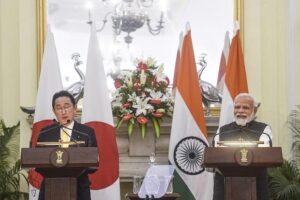

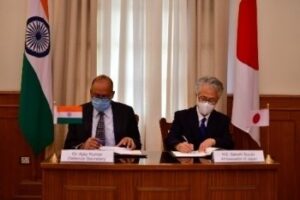
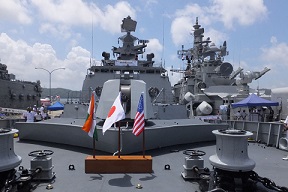
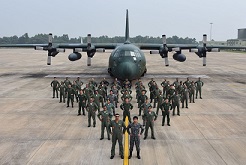



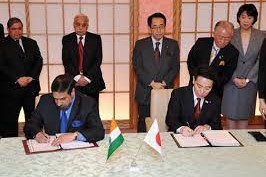

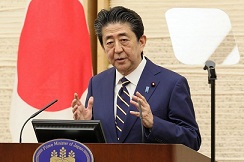
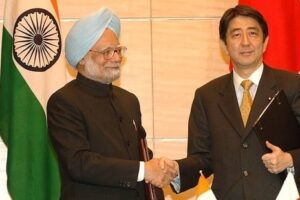
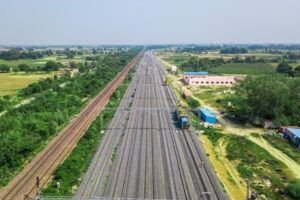
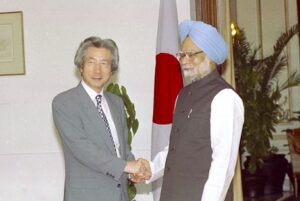
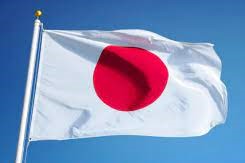
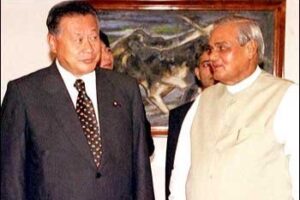
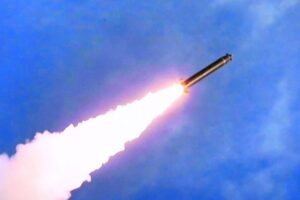
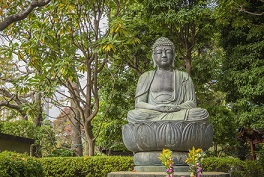



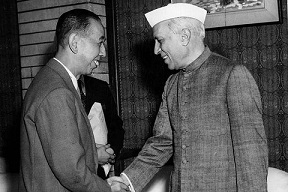
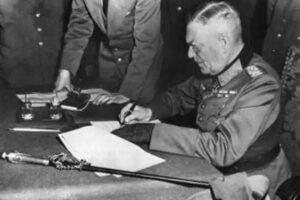
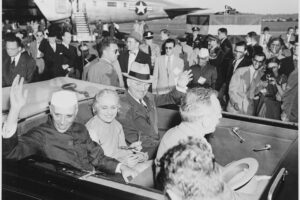

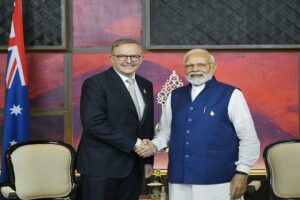



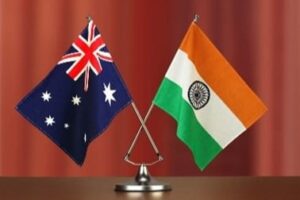
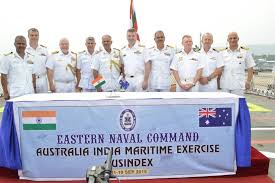

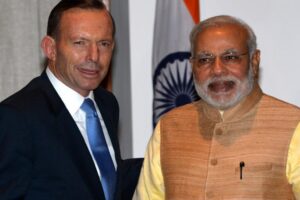
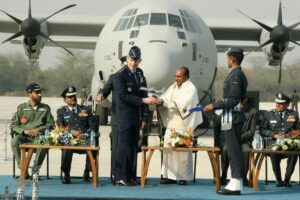



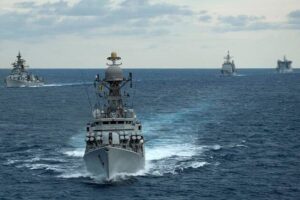
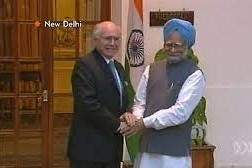
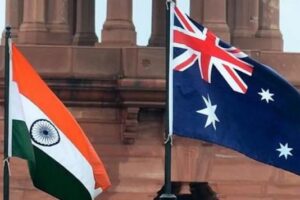
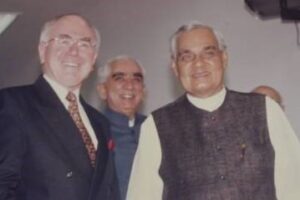
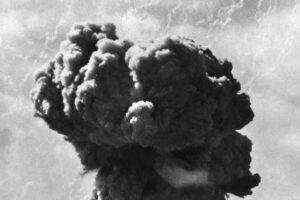
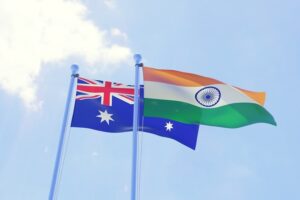

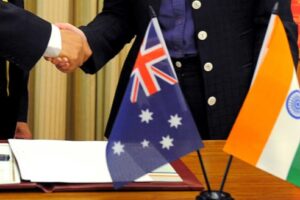

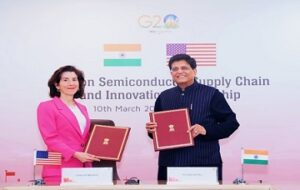
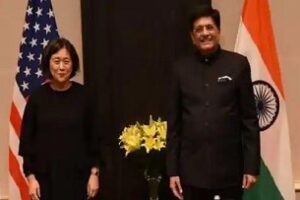
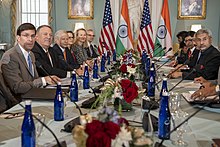

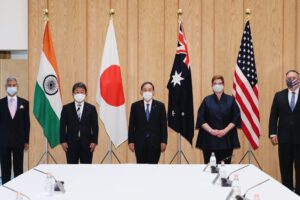

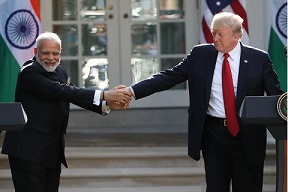
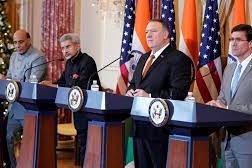

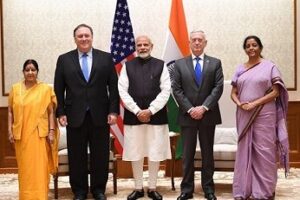
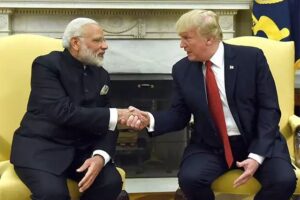
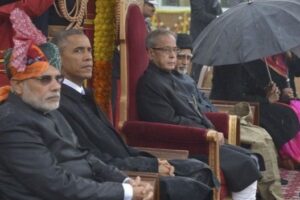

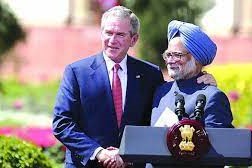
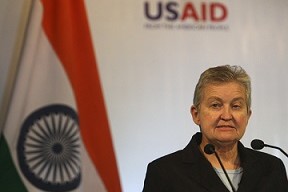
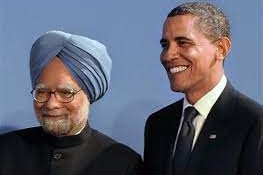
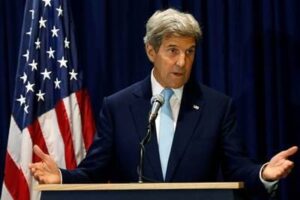

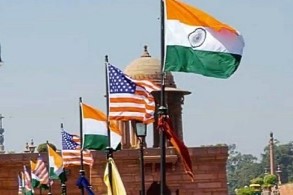
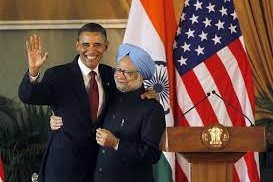
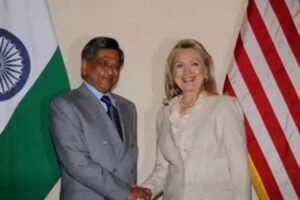
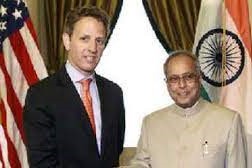
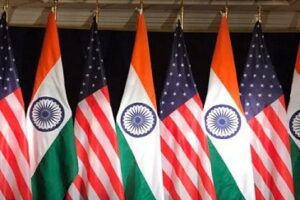
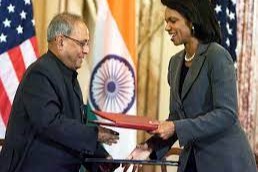

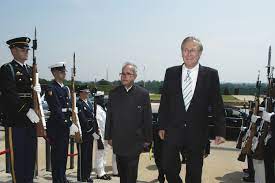


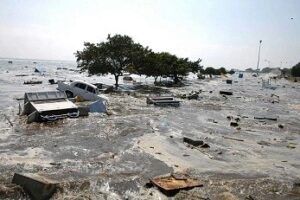

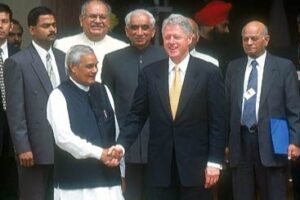
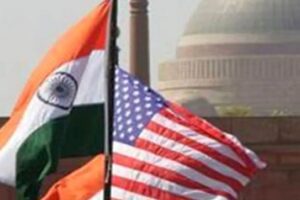
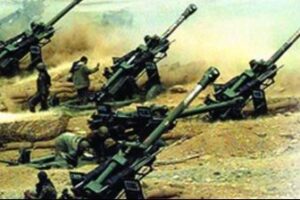
 onducted a total of five underground nuclear tests, breaking a 24-year self-imposed moratorium on nuclear testing. Pakistan followed, claiming 5 tests on May 28, 1998, and an additional test on May 30. The unannounced tests created a global storm of criticism, as well as a serious setback for decades of U.S. nuclear nonproliferation efforts in South Asia. On May 13, 1998, President Clinton imposed economic and military sanctions on India, mandated by Section 102 of the Arms Export Control Act (AECA), and applied the same sanctions to Pakistan on May 30. Some effects of the sanctions on India included: termination of $21 million in FY1998 economic development assistance; postponement of $1.7 billion in lending by the International Financial Institutions (IFI), as supported by the Group of Eight (G-8) leading industrial nations; prohibition on loans or credit from U.S. banks to the government of India; and termination of Foreign Military Sales under the Arms Export Control Act. Humanitarian assistance, food, or other agricultural commodities are excepted from sanctions under the law.
onducted a total of five underground nuclear tests, breaking a 24-year self-imposed moratorium on nuclear testing. Pakistan followed, claiming 5 tests on May 28, 1998, and an additional test on May 30. The unannounced tests created a global storm of criticism, as well as a serious setback for decades of U.S. nuclear nonproliferation efforts in South Asia. On May 13, 1998, President Clinton imposed economic and military sanctions on India, mandated by Section 102 of the Arms Export Control Act (AECA), and applied the same sanctions to Pakistan on May 30. Some effects of the sanctions on India included: termination of $21 million in FY1998 economic development assistance; postponement of $1.7 billion in lending by the International Financial Institutions (IFI), as supported by the Group of Eight (G-8) leading industrial nations; prohibition on loans or credit from U.S. banks to the government of India; and termination of Foreign Military Sales under the Arms Export Control Act. Humanitarian assistance, food, or other agricultural commodities are excepted from sanctions under the law. 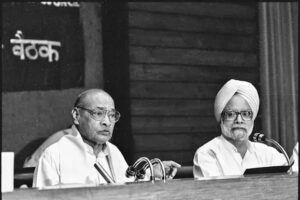
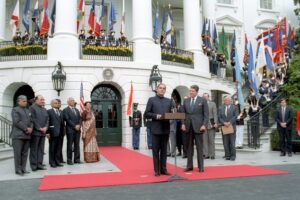
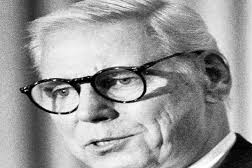

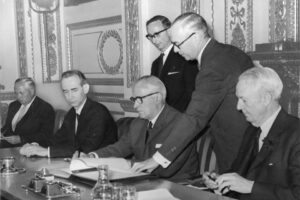
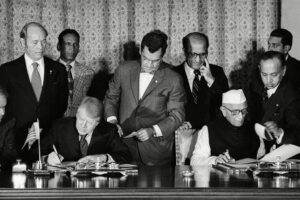
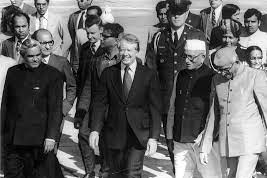
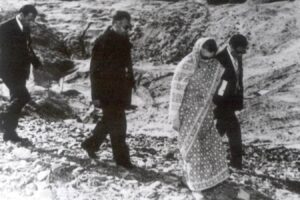
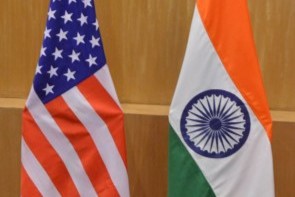

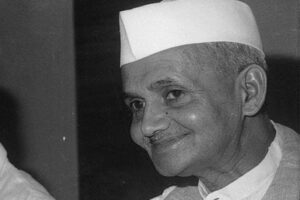
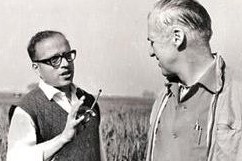
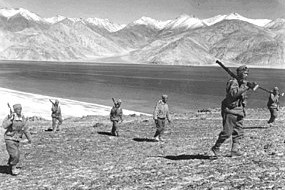
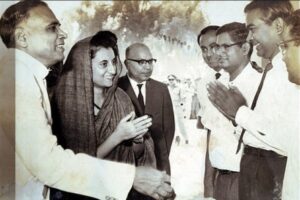
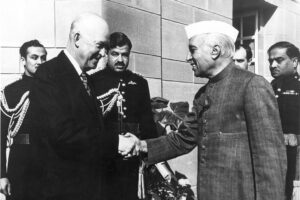

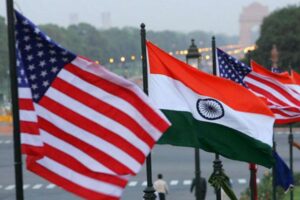
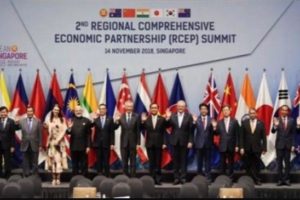 The first ministerial level meeting of QUAD was held on the sidelines of the United Nations General Assembly in New York. Before this, the QUAD had
The first ministerial level meeting of QUAD was held on the sidelines of the United Nations General Assembly in New York. Before this, the QUAD had AusIndEx is an exercise between India and Australia which was first held in 2015.The Australian
AusIndEx is an exercise between India and Australia which was first held in 2015.The Australian 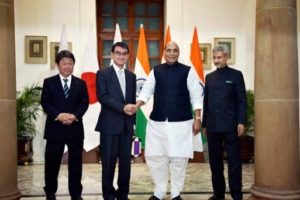



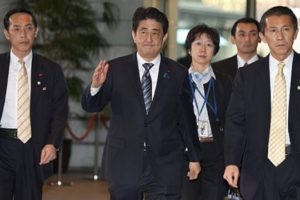
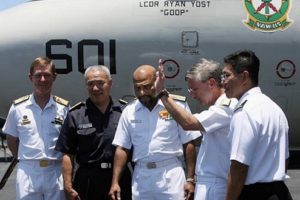
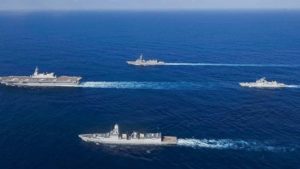

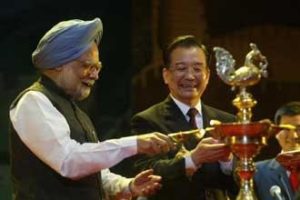 On recommendations of the Japanese government, the four countries met at Manila, Philippines for ASEAN Regional Forum (ARF) originally, but also ended up having a meeting of what we call the first meeting of four nation states on issues of
On recommendations of the Japanese government, the four countries met at Manila, Philippines for ASEAN Regional Forum (ARF) originally, but also ended up having a meeting of what we call the first meeting of four nation states on issues of 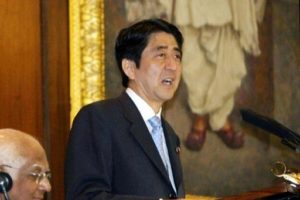 On his official visit to India, Japanese PM Mr. Shinzo Abe reinforced the ties of two nations, i.e., Japan and India with his famous speech about
On his official visit to India, Japanese PM Mr. Shinzo Abe reinforced the ties of two nations, i.e., Japan and India with his famous speech about  In 2007, Japanese President Shinzo Abe resigned from his post citing health reasons. This had a significant impact on QUAD as he was the architect & advocate of QUAD. His successor, Yasuo Fukuda, did not take up QUAD with such zeal leading to dormancy of the forum. (
In 2007, Japanese President Shinzo Abe resigned from his post citing health reasons. This had a significant impact on QUAD as he was the architect & advocate of QUAD. His successor, Yasuo Fukuda, did not take up QUAD with such zeal leading to dormancy of the forum. (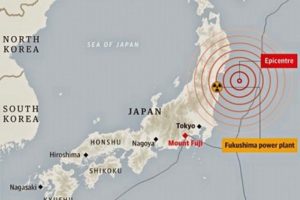 Japan earthquake and tsunami of 2011, also called Great Sendai Earthquake or Great Tōhoku Earthquake, was a 9.0 magnitude earthquake which struck below the floor of the Western Pacific at 2:49 PM. The powerful earthquake affected the northeastern coast of Honshu, Japan’s main island, and also initiated a series of large tsunami waves that devastated coastal areas of Japan, which also led to a major nuclear accident. Japan received aid from India, US, Australia as well as other countries. US Navy aircraft carrier was dispatched to the area and Australia sent search-and-rescue teams.
Japan earthquake and tsunami of 2011, also called Great Sendai Earthquake or Great Tōhoku Earthquake, was a 9.0 magnitude earthquake which struck below the floor of the Western Pacific at 2:49 PM. The powerful earthquake affected the northeastern coast of Honshu, Japan’s main island, and also initiated a series of large tsunami waves that devastated coastal areas of Japan, which also led to a major nuclear accident. Japan received aid from India, US, Australia as well as other countries. US Navy aircraft carrier was dispatched to the area and Australia sent search-and-rescue teams. 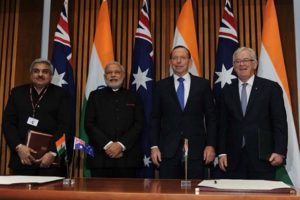 India and Australia signed the
India and Australia signed the  The India-Japan Agreement for Cooperation in the Peaceful Uses of Nuclear Energy was signed on 11 November, 2016 and came into force on 20 July, 2017 which was representative of strengthening ties between India and Japan. Diplomatic notes were exchanged between Dr. S. Jaishankar and H.E. Mr. Kenji Hiramatsu, Ambassador of Japan to India. (
The India-Japan Agreement for Cooperation in the Peaceful Uses of Nuclear Energy was signed on 11 November, 2016 and came into force on 20 July, 2017 which was representative of strengthening ties between India and Japan. Diplomatic notes were exchanged between Dr. S. Jaishankar and H.E. Mr. Kenji Hiramatsu, Ambassador of Japan to India. (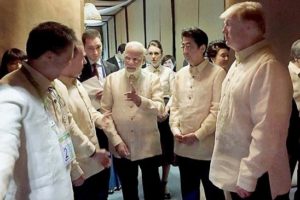 The foreign ministry
The foreign ministry The Officials of QUAD member countries met in Singapore on November 15, 2018 for consultation on regional & global issues of common interest. The main discussion revolved around connectivity, sustainable development, counter-terrorism, maritime and cyber security, with the view to promote peace, stability and prosperity in the
The Officials of QUAD member countries met in Singapore on November 15, 2018 for consultation on regional & global issues of common interest. The main discussion revolved around connectivity, sustainable development, counter-terrorism, maritime and cyber security, with the view to promote peace, stability and prosperity in the 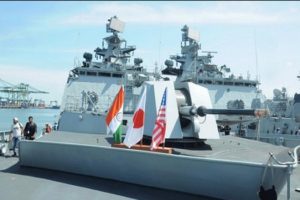 The 23rd edition of trilateral Malabar maritime exercise between India, US and Japan took place on 26 September- 04 October, 2019 off the coast of Japan.
The 23rd edition of trilateral Malabar maritime exercise between India, US and Japan took place on 26 September- 04 October, 2019 off the coast of Japan.  After the first ministerial level meeting of QUAD in September, 2019, the senior officials of US, Japan, India and Australia again met for consultations in Bangkok on the margins of the East Asia Summit. Statements were issued separately by the four countries. Indian Ministry of External Affairs said “In statements issued separately by the four countries, MEA said, “proceeding from the strategic guidance of their Ministers, who met in New York City on the sidelines of the UN General Assembly recently, the officials exchanged views on ongoing and additional practical cooperation in the areas of connectivity and infrastructure development, and security matters, including counterterrorism, cyber and maritime security, with a view to promoting peace, security, stability, prosperity in the Indo-Pacific region.”
After the first ministerial level meeting of QUAD in September, 2019, the senior officials of US, Japan, India and Australia again met for consultations in Bangkok on the margins of the East Asia Summit. Statements were issued separately by the four countries. Indian Ministry of External Affairs said “In statements issued separately by the four countries, MEA said, “proceeding from the strategic guidance of their Ministers, who met in New York City on the sidelines of the UN General Assembly recently, the officials exchanged views on ongoing and additional practical cooperation in the areas of connectivity and infrastructure development, and security matters, including counterterrorism, cyber and maritime security, with a view to promoting peace, security, stability, prosperity in the Indo-Pacific region.” US 2+2 Ministerial Dialogue was held on 18 December, 2019, in Washington DC. Secretary of State Michael R. Pompeo and Secretary of Defense Mark T. Esper will host Indian Minister of External Affairs Dr. S. Jaishankar and Minister of Defense Shri Rajnath Singh. The discussion focussed on deepening bilateral strategic and defense cooperation, exchanging perspectives on global developments, and our shared leadership in the Indo-Pacific region.The two democracies signed the Industrial Security Annex before the 2+2 Dialogue. Assessments of the situation in Afghanistan, Pakistan, Nepal, Sri Lanka, and the Indian Ocean region in general were shared between both countries. (
US 2+2 Ministerial Dialogue was held on 18 December, 2019, in Washington DC. Secretary of State Michael R. Pompeo and Secretary of Defense Mark T. Esper will host Indian Minister of External Affairs Dr. S. Jaishankar and Minister of Defense Shri Rajnath Singh. The discussion focussed on deepening bilateral strategic and defense cooperation, exchanging perspectives on global developments, and our shared leadership in the Indo-Pacific region.The two democracies signed the Industrial Security Annex before the 2+2 Dialogue. Assessments of the situation in Afghanistan, Pakistan, Nepal, Sri Lanka, and the Indian Ocean region in general were shared between both countries. (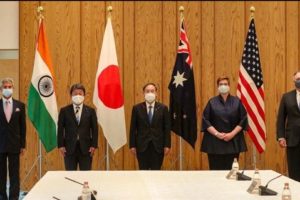 The foreign ministers of QUAD continued their discussions from the last ministerial level meeting in 2019, on 6 October, 2020. While there was no joint statement released, all countries issued individual readouts. As per the issue readout by India, the discussion called for a coordinated response to the challenges including financial problems emanating from the pandemic, best practices to combat Covid-19, increasing the resilience of supply chains, and enhancing access to affordable vaccines, medicines and medical equipment. There was also a focus on maintaining stability in the Indo-Pacific region amidst growing tensions. Australian media release mentions “We emphasised that, especially during a pandemic, it was vital that states work to ease tensions and avoid exacerbating long-standing disputes, work to counter disinformation, and refrain from malicious cyberspace activity. Ministers reiterated that states cannot assert maritime claims that are inconsistent with international law, particularly the United Nations Convention on the Law of the Sea (UNCLOS).”
The foreign ministers of QUAD continued their discussions from the last ministerial level meeting in 2019, on 6 October, 2020. While there was no joint statement released, all countries issued individual readouts. As per the issue readout by India, the discussion called for a coordinated response to the challenges including financial problems emanating from the pandemic, best practices to combat Covid-19, increasing the resilience of supply chains, and enhancing access to affordable vaccines, medicines and medical equipment. There was also a focus on maintaining stability in the Indo-Pacific region amidst growing tensions. Australian media release mentions “We emphasised that, especially during a pandemic, it was vital that states work to ease tensions and avoid exacerbating long-standing disputes, work to counter disinformation, and refrain from malicious cyberspace activity. Ministers reiterated that states cannot assert maritime claims that are inconsistent with international law, particularly the United Nations Convention on the Law of the Sea (UNCLOS).”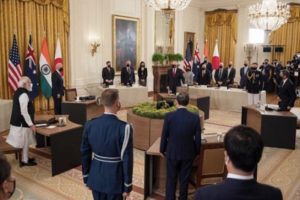 On September 24, President Biden hosted Prime Minister Scott Morrison of Australia, Prime Minister Narendra Modi of India, and Prime Minister Yoshihide Suga of Japan at the White House for the first-ever in-person Leaders’ Summit of the QUAD. The leaders released a Joint Statement which summarised their dialogue and future course of action. The regional security of the Indo-Pacific and strong confidence in the ASEAN remained on the focus along with response to the Pandemic.
On September 24, President Biden hosted Prime Minister Scott Morrison of Australia, Prime Minister Narendra Modi of India, and Prime Minister Yoshihide Suga of Japan at the White House for the first-ever in-person Leaders’ Summit of the QUAD. The leaders released a Joint Statement which summarised their dialogue and future course of action. The regional security of the Indo-Pacific and strong confidence in the ASEAN remained on the focus along with response to the Pandemic. 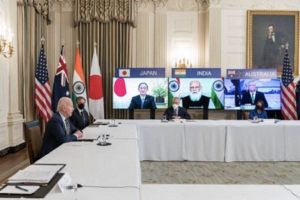 The QUAD Vaccine Partnership was announced at the first QUAD Summit on 12 March 2021 where QUAD countries agreed to deliver 1.2 billion vaccine doses globally. The aim was to expand and finance vaccine manufacturing and equipping the Indo-Pacific to build resilience against Covid-19. The launch of a senior-level QUAD Vaccine Experts Group, comprised of top scientists and officials from all QUAD member governments was also spearheaded.
The QUAD Vaccine Partnership was announced at the first QUAD Summit on 12 March 2021 where QUAD countries agreed to deliver 1.2 billion vaccine doses globally. The aim was to expand and finance vaccine manufacturing and equipping the Indo-Pacific to build resilience against Covid-19. The launch of a senior-level QUAD Vaccine Experts Group, comprised of top scientists and officials from all QUAD member governments was also spearheaded.  Although the Tsunami Core group had to be disbanded on fulfilment of its purpose, however the quadrilateral template that formed remained intact as a successful scaffolding of four countries, as stated by authors Patrick Gerard Buchan and Benjamin Rimland in their diplomatic brief about QUAD ( you can access the brief at
Although the Tsunami Core group had to be disbanded on fulfilment of its purpose, however the quadrilateral template that formed remained intact as a successful scaffolding of four countries, as stated by authors Patrick Gerard Buchan and Benjamin Rimland in their diplomatic brief about QUAD ( you can access the brief at 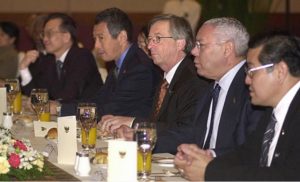 Secretary of State Colin Powell stated that the Core Tsunami Group was to be disbanded and folded and clubbed with the broader United Nations led Relief Operations. In a Tsunami Relief Conference in Jakarta, Secretary Powell stated that
Secretary of State Colin Powell stated that the Core Tsunami Group was to be disbanded and folded and clubbed with the broader United Nations led Relief Operations. In a Tsunami Relief Conference in Jakarta, Secretary Powell stated that 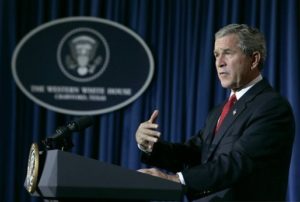 Soon after the Earthquake and Tsunami crisis, humanitarian reliefs by countries, viz., US, India, Japan, and Australia started to help the 13 havoc-stricken countries. The US initially promised $ 35 Millions in aid. However, on 29
Soon after the Earthquake and Tsunami crisis, humanitarian reliefs by countries, viz., US, India, Japan, and Australia started to help the 13 havoc-stricken countries. The US initially promised $ 35 Millions in aid. However, on 29 At 7:59AM local time, an earthquake of 9.1 magnitude (undersea) hit the coast of Sumatra, an Indonesian island. As a result of the same, massive waves of Tsunami triggered by the earthquake wreaked havoc for 7 hours across the Indian Ocean and to the coastal areas as far away as East Africa. The infamous Tsunami killed around 225,000 people, with people reporting the height of waves to be as high as 9 metres, i.e., 30 feet. Indonesia, Srilanka, India, Maldives, Thailand sustained horrendously massive damage, with the death toll exceeding 200,000 in Northern Sumatra’s Ache province alone. A great many people, i.e., around tens of thousands were found dead or missing in Srilanka and India, mostly from Andaman and Nicobar Islands of Indian territory. Maldives, being a low-lying country, also reported casualties in hundreds and more, with several non-Asian tourists reported dead or missing who were vacationing. Lack of food, water, medicines burgeoned the numbers of casualties, with the relief workers finding it difficult to reach the remotest areas where roads were destroyed or civil war raged. Long-term environmental damage ensued too, as both natural and man-made resources got demolished and diminished.
At 7:59AM local time, an earthquake of 9.1 magnitude (undersea) hit the coast of Sumatra, an Indonesian island. As a result of the same, massive waves of Tsunami triggered by the earthquake wreaked havoc for 7 hours across the Indian Ocean and to the coastal areas as far away as East Africa. The infamous Tsunami killed around 225,000 people, with people reporting the height of waves to be as high as 9 metres, i.e., 30 feet. Indonesia, Srilanka, India, Maldives, Thailand sustained horrendously massive damage, with the death toll exceeding 200,000 in Northern Sumatra’s Ache province alone. A great many people, i.e., around tens of thousands were found dead or missing in Srilanka and India, mostly from Andaman and Nicobar Islands of Indian territory. Maldives, being a low-lying country, also reported casualties in hundreds and more, with several non-Asian tourists reported dead or missing who were vacationing. Lack of food, water, medicines burgeoned the numbers of casualties, with the relief workers finding it difficult to reach the remotest areas where roads were destroyed or civil war raged. Long-term environmental damage ensued too, as both natural and man-made resources got demolished and diminished.
No responses yet